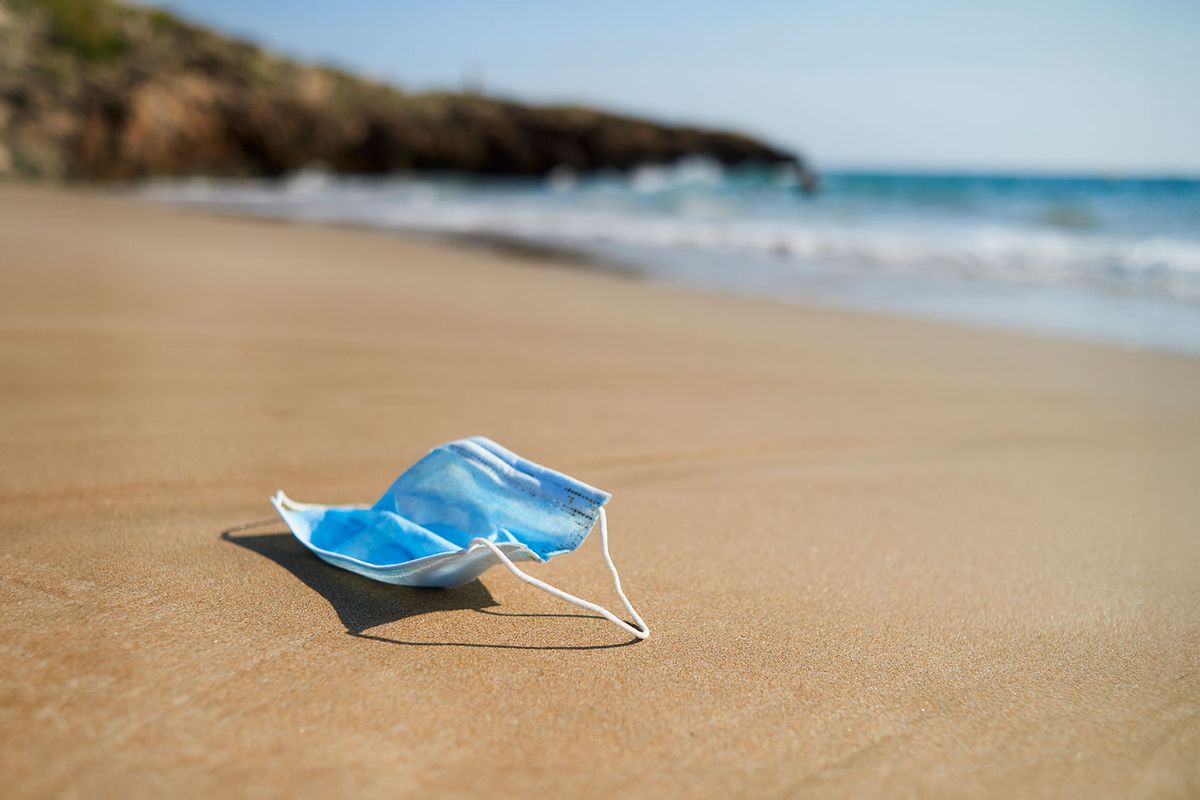It’s not only a so-called “brat summer,” 2024 is also turning out to be a FLiRT summer — as in the collection of COVID-19 variants driving the latest summer wave.
Based on wastewater sample data, the Centers for Disease Control (CDC) and Prevention reports that COVID levels have increased in most states nationwide. In fact, nationally the CDC labels wastewater viral activity level for COVID is currently labeled as “high,” with the Western and Southern regions displaying the most alarming levels of activity. Wastewater testing — or collecting samples of pathogens in our feces — is the current standard to monitor the national and regional spread of COVID. According to the CDC, the summer started with a steady decline in cases caused by the JN.1 variant. But now, KP.3, KP.3.1.1., and KP.2, known as the “FLiRT variants” have increased. KP.3 ranks most prevalent as of July 20 and makes up an estimated 32.9% of cases across the country.
But experts tell Salon despite the so-called surge, this year’s COVID-19 spread is a bit different for a variety of reasons.
“I think we're in a summer COVID bump,” William Schaffner, a professor of infectious disease at Vanderbilt University Medical Center, told Salon. “Unlike influenza, which essentially disappears during the summer, COVID is different — it sticks around.”
Influenza is “the one-humped camel,” Schaffner elaborated. But COVID is the “two-humped camel.” Indeed, this isn’t the first time COVID has made a splash in summer. August 2021 marked the COVID comeback, as did a surge in summer 2022 and then there was 2023’s “hot COVID summer.”
“We've had this summer increase in COVID every summer since COVID has been around, and it's expected to occur,” Amesh Adalja, an infectious disease expert and senior scholar at Johns Hopkins University Center for Health Security, told Salon. “But each year it becomes more manageable because there are more tools to deal with COVID, and more immunity in the population that keeps COVID primarily as an outpatient illness with minimal impact on the healthcare system.”
It’s notable, both experts said, that COVID has a dual seasonality — unlike flu or other coronaviruses. In terms of why this is happening, Adalja said it’s a reflection of the fact that the spike protein of the virus is mutating “pretty aggressively” compared to other respiratory viruses, which means it’s rapidly creating new variants.
“This is still evolving, it has a lot of selection pressure on it from the human immune system, and that may be part of why we see this double seasonality,” Adalja said. “Also, as people are going indoors when it’s really hot, the virus transmits more efficiently.”
However, it is too early to say if this is a permanent seasonal trend, he said.
Regarding what to expect during this summer’s “bump,” symptoms are more or less the same as previous summer outbreaks. Schaffner said if a person has a runny nose, sore throat, and a cough, it’s probably a good idea to get a COVID test. If someone tests positive in a high-risk group, such as people over the age of 65 or those are who immunocompromised, they should tell their doctors right away. Paxlovid, the antiviral treatment to treat COVID-19, will likely be prescribed. President Joe Biden, who is 81, took Paxlovid to fight his recent COVID-19 infection.
But overall, cases this summer are more “mild,” Schaffner said.
“These infections are milder and don't require hospitalizations, even though they make you feel crummy for three or four days,” he said. “I think that both the public and many practitioners have a more relaxed approach to COVID now, but when it comes to these high-risk people, I think the onus is more on those individuals.”
Schaffner added while there has been an uptick in hospitalizations for COVID this summer in some parts of the country, most of the cases are older people, who have underlying medical conditions, diabetes, and are immunocompromised.
“These are all folks who, even if they had received their updated vaccine last fall, their protection now is waning,” Schaffner said. “So if they get infected with the virus, these high-risk people are more likely to require hospitalization, and that's what's happening.”
Despite all this, experts have previously raised alarm bells about the variant KP.3 because it appears to be more immune evasive than other circulating lineages. Adalja said the FLiRT variants are descendants of Omicron and that they are evolving “in response to the level of immunity in the population.” But this could just be a moment in time for the FLiRT variants, as another variant will likely outpace them.
“The FLiRT variants may eventually give way to new variants that are able to outcompete them,” Adalja said.
For people who are concerned about this summer’s wave, Schaffner said the same precautions as before are effective today: wear masks indoors and stay up to date with vaccines.
“Masks are not perfect, but they are literally another layer of protection for people in those high-risk groups,” he said.



Shares